挂在锦里街上的红灯笼,中国成都 Red lanterns hanging in Jinli Street, Chengdu, China (© Philippe LEJEANVRE/Getty Images)
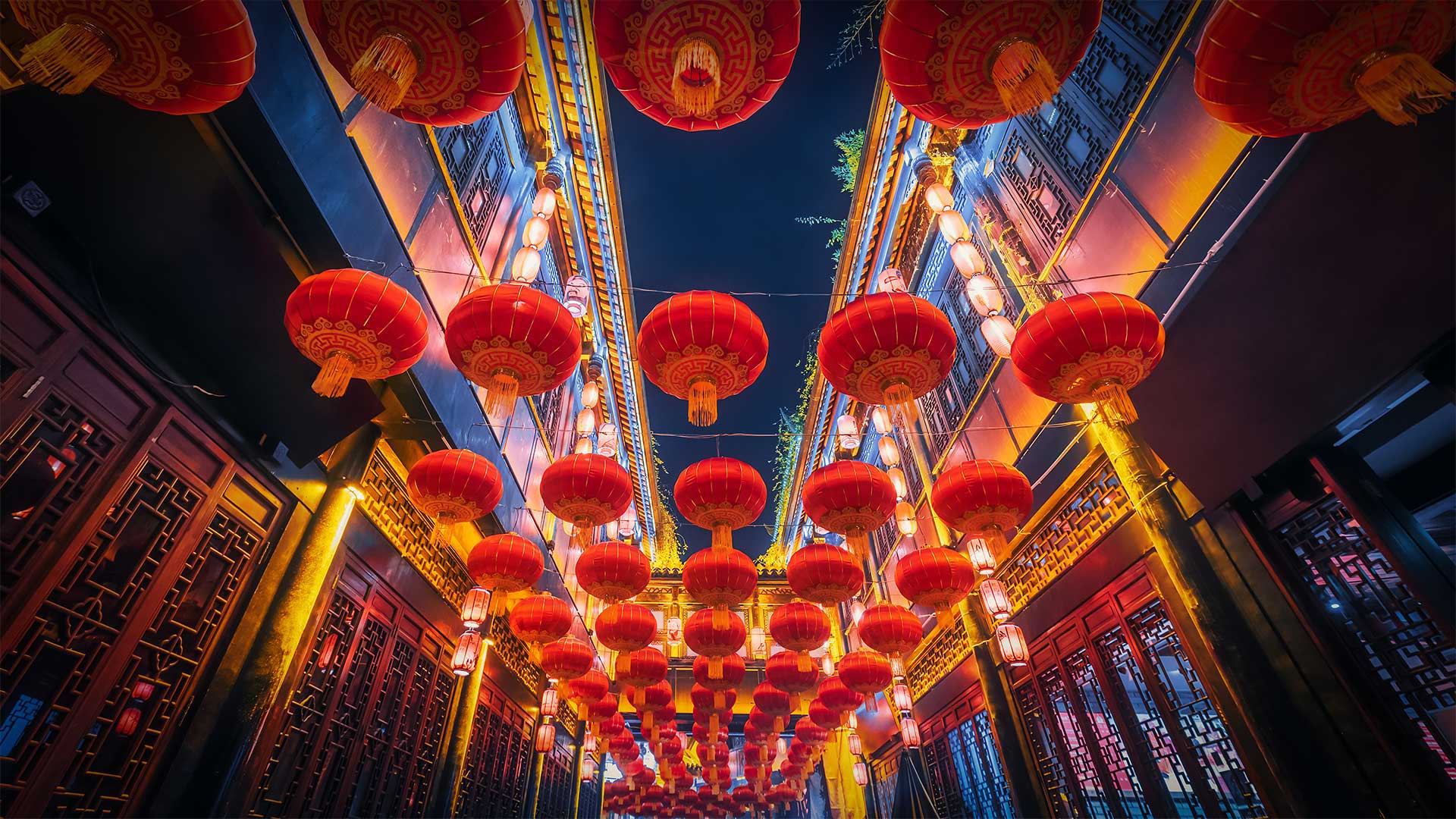
挂在锦里街上的红灯笼,中国成都 Red lanterns hanging in Jinli Street, Chengdu, China (© Philippe LEJEANVRE/Getty Images)
Lighting the way to a new year
The Lantern Festival marks the final day of Lunar (aka Chinese) New Year celebrations, which began this year on February 12 when we ushered in the Year of the Ox. Traditionally, the day of the festival is filled with dancing, firecrackers, children's games, and food—including tangyuan, a desert made from balls of rice flour and generally loaded with sweet fillings. After sundown, celebrants gather to light or observe lanterns like the ones we see here in Chengdu, China.
清晨结了霜的树林,中国四姑娘山 Early morning frost on trees in Mount Siguniang National Park in Sichuan Province, China (© Robert Harding World Imagery/Offset by Shutterstock)
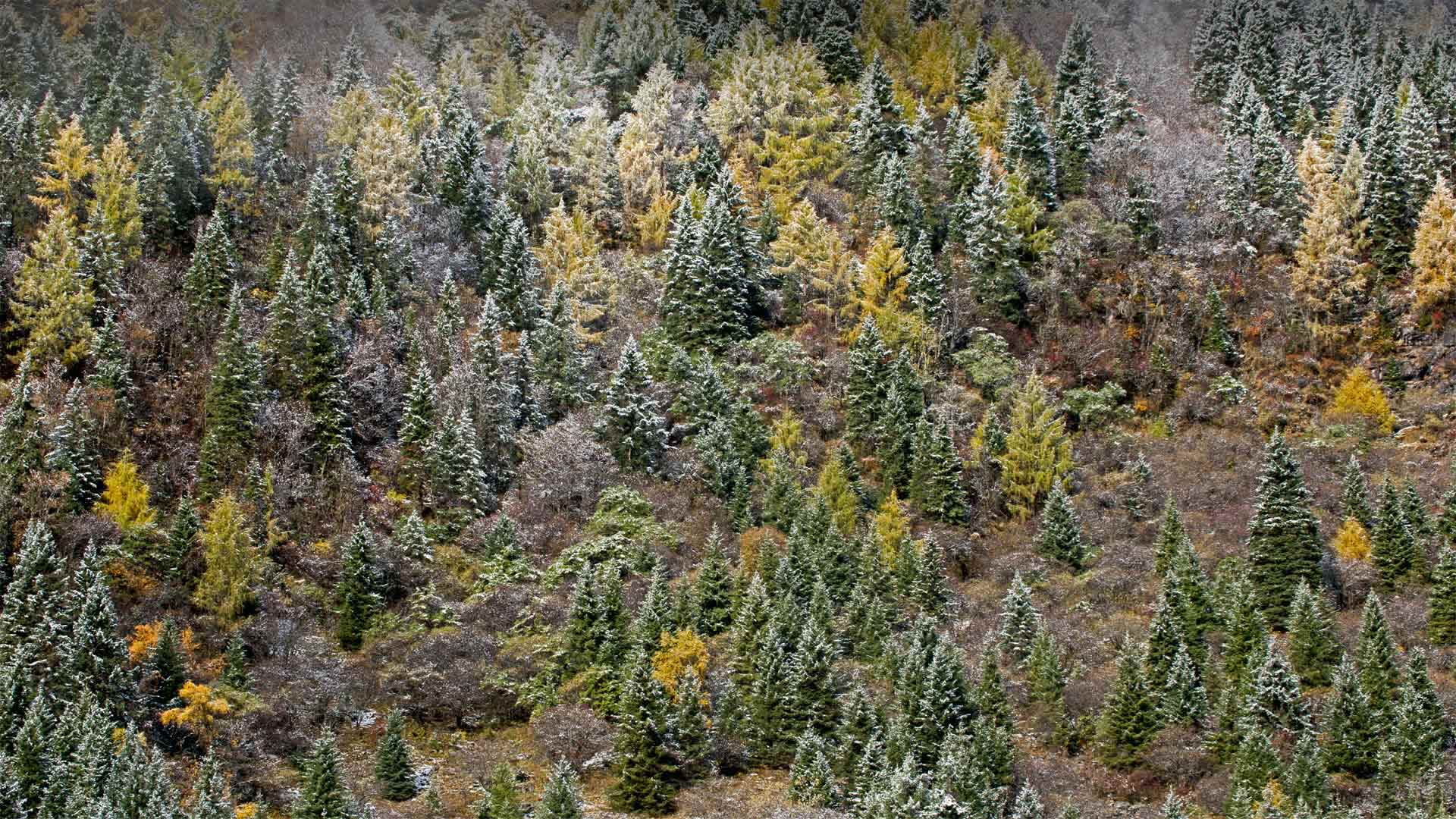
清晨结了霜的树林,中国四姑娘山 Early morning frost on trees in Mount Siguniang National Park in Sichuan Province, China (© Robert Harding World Imagery/Offset by Shutterstock)
Four Sisters, thousands of trees
You'll find this wintery, sylvan scene on the slopes of Mount Siguniang, the tallest summit of the Qionglai Mountains in Western China. Its name, which translates as 'Four Sisters Mountain,' is inspired by the local Tibetan legend behind its four distinct peaks. According to the story, four sisters saved their people using a magic mirror to turn themselves into the mountain to imprison the devil. The tallest peak, peak of 'the youngest sister,' stands at 20,500 feet and is an extremely challenging climb– it's rarely attempted and wasn't summitted until 1981. The surrounding park includes three valleys flanking the mountain and is part of the Sichuan Giant Panda Sanctuaries, a UNESCO World Heritage Site. In addition to giant pandas, the sanctuary is home to the red panda, the snow leopard, the clouded leopard, and between 5,000 and 6,000 species of plants.
四姐妹,千树
在中国西部邛崃山脉最高的山峰——四姑娘山的山坡上,你会发现这个冬天的森林景象。它的名字被翻译成“四姑娘山”,灵感来自四座不同山峰背后的藏族传说。根据故事,四姐妹救了他们的人用一面魔镜把自己变成山里囚禁魔鬼。最高的山峰“小妹妹”的山峰高达20500英尺,是一次极具挑战性的攀登——很少有人尝试,直到1981年才达到顶峰。周围的公园包括山两侧的三个山谷,是联合国教科文组织世界遗产四川大熊猫保护区的一部分。除大熊猫外,该保护区还拥有小熊猫,雪豹,云豹和5000至6,000种植物。
马蹄寺风景区内的马蹄寺和石窟,中国甘肃省 The Mati Si (Horse's Hoof Temple) and grottoes of Mati Si Scenic Area, Gansu province, China (© Ana Flašker/Alamy)
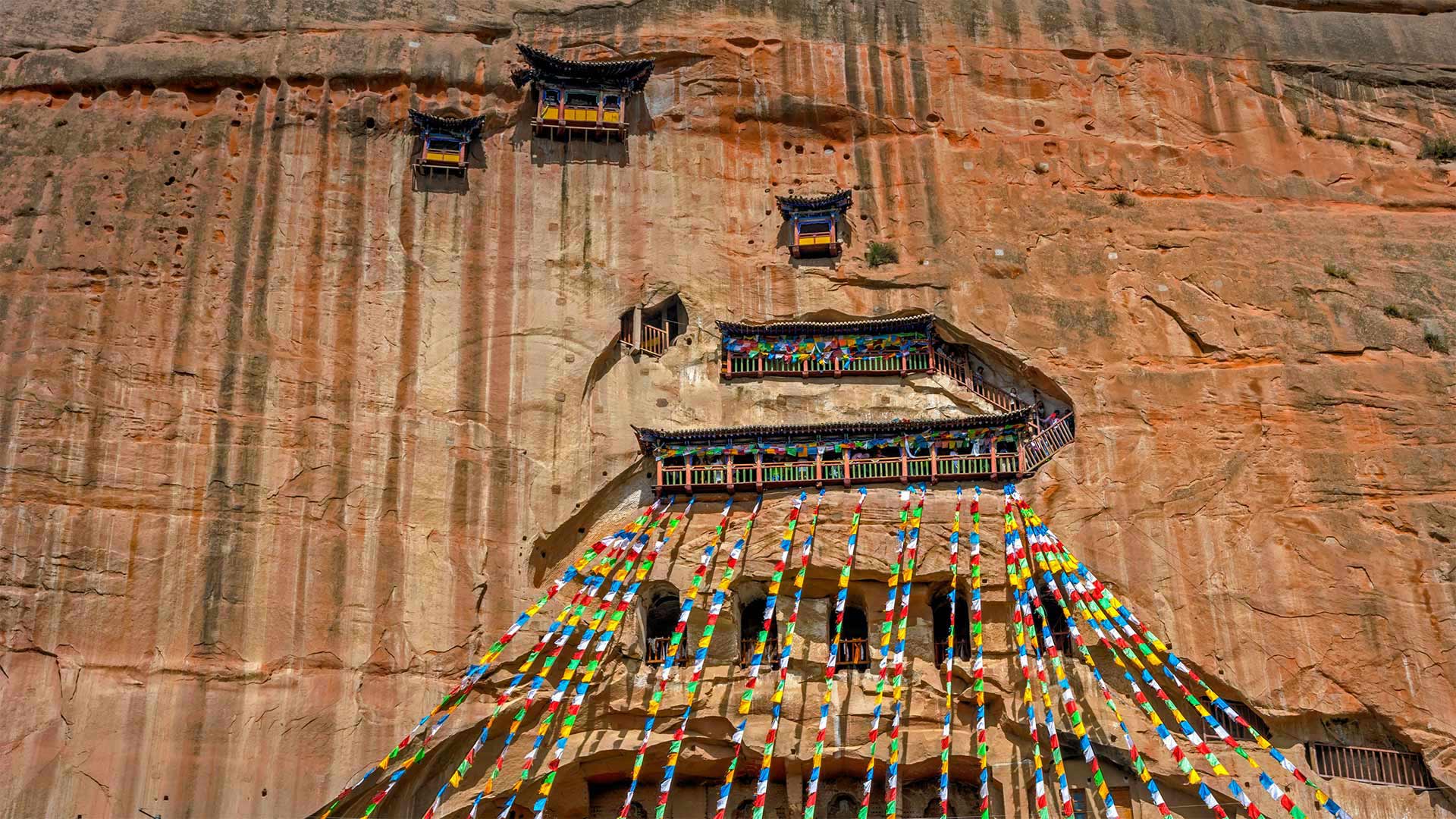
马蹄寺风景区内的马蹄寺和石窟,中国甘肃省 The Mati Si (Horse's Hoof Temple) and grottoes of Mati Si Scenic Area, Gansu province, China (© Ana Flašker/Alamy)
A cliff-hanging complex of temples
Feast your eyes on the colorful Mati Si (Horse's Hoof Temple) and its cliffside complex of sandstone grottoes and wooden pavilions. To understand the mythical origin of the Horse's Hoof Temple, you have to squint your eyes a bit. Then you might be able to see the hoof marks left by a frightened longma, the fabled winged dragon horse that purportedly landed here thousands of years ago. What you can't see is the claustrophobic network of tunnels connecting the seven floors and seven grottoes to the Mati Si pagoda, which itself is 200 feet high and holds hundreds of Buddha statues.
Mati Si lies within the grasslands of China's Gansu province along the Hexi Corridor of what was once China's Northern Silk Road. There's no bus service to the temple so you'll have to grab a taxi or, like the mythical dragon horse that left its imprint here, hoof it.
运城盐湖,中国山西 Yuncheng Salt Lake in Yuncheng, Shanxi Province, China (© Xinhua/Alamy)
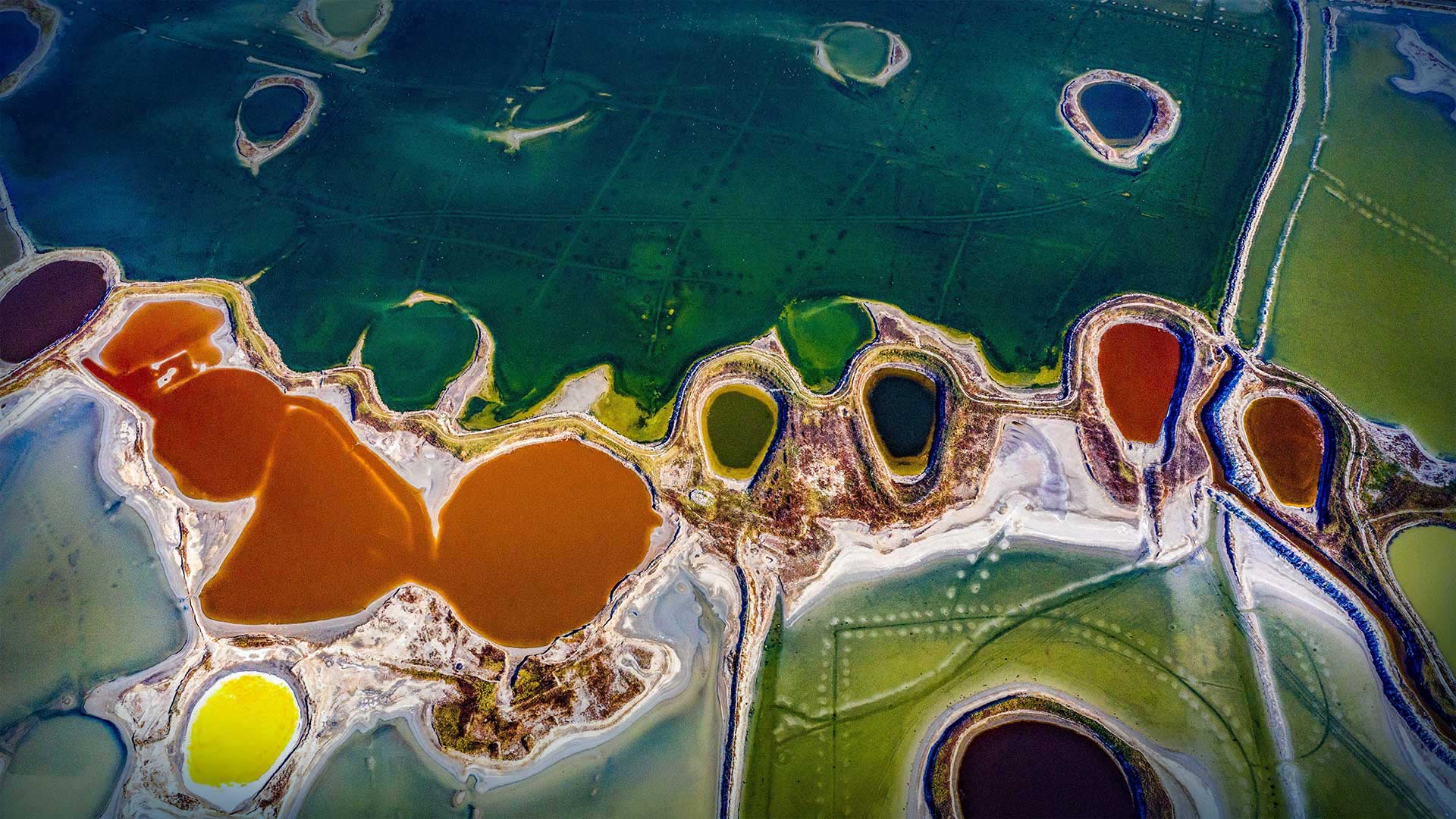
运城盐湖,中国山西 Yuncheng Salt Lake in Yuncheng, Shanxi Province, China (© Xinhua/Alamy)
Water colors
The Salt Lake in Yuncheng, China, has such a high salinity, it's sometimes called China's Dead Sea. But unlike the Dead Sea in the Middle East, Yuncheng's Salt Lake supports abundant microscopic life: algae and other microorganisms that have a high tolerance for the salt. In autumn, the lake temperature is high enough to spark algae blooms, bringing a variety of intense colors to the lake water.
Stranger still, during the cold, dry winter, the lake level drops, causing some of the sodium content in the water to form mirabilite rime—spiky, ice crystal-like mineral formations that make the lake shore and shallow surfaces look like an ice-covered landscape from science fiction.
玄武湖公园的金色银杏叶,中国南京 Golden ginkgo leaves at Xuanwu Lake Park in Nanjing, Jiangsu Province, China (© SIPA Asia/ZUMA Wire/Alamy)
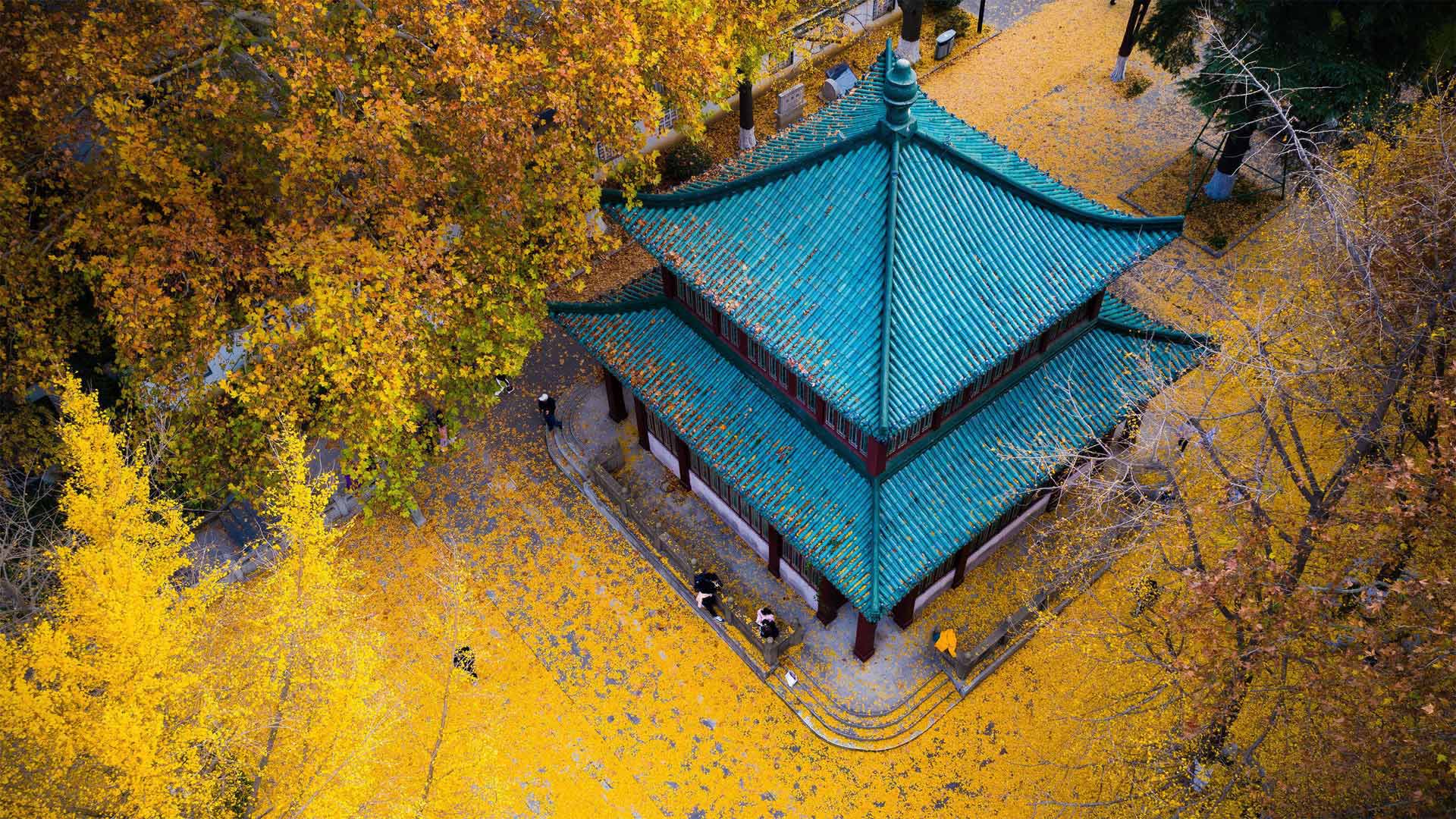
玄武湖公园的金色银杏叶,中国南京 Golden ginkgo leaves at Xuanwu Lake Park in Nanjing, Jiangsu Province, China (© SIPA Asia/ZUMA Wire/Alamy)
A tree of many memories
As autumn takes hold in China, a blanket of fan-shaped golden leaves—like this one at Xuanwu Lake Park in Nanjing—becomes a familiar sight. And it's been that way for longer than anyone can remember, thanks to a native tree with a lineage going back eons, the ginkgo.
Even though most medical experts say it's no special boon to the brain, maybe Ginkgo biloba is touted as a memory enhancer for a reason—after all, many Chinese ginkgoes are known to be at least 1,400 years old. The order they belong to, Ginkgoales, is 270 million years old—meaning the sole remaining member species, Ginkgo biloba, survived the extinction event that killed the dinosaurs. Ginkgo biloba originated in China, but has been cultivated all over the world for centuries as a food source, medicinal plant, and splendid symbol of resilience.
陆家嘴金融贸易区,中国上海 Lujiazui Financial District, Shanghai, China (© Jackal Pan/Getty Images)
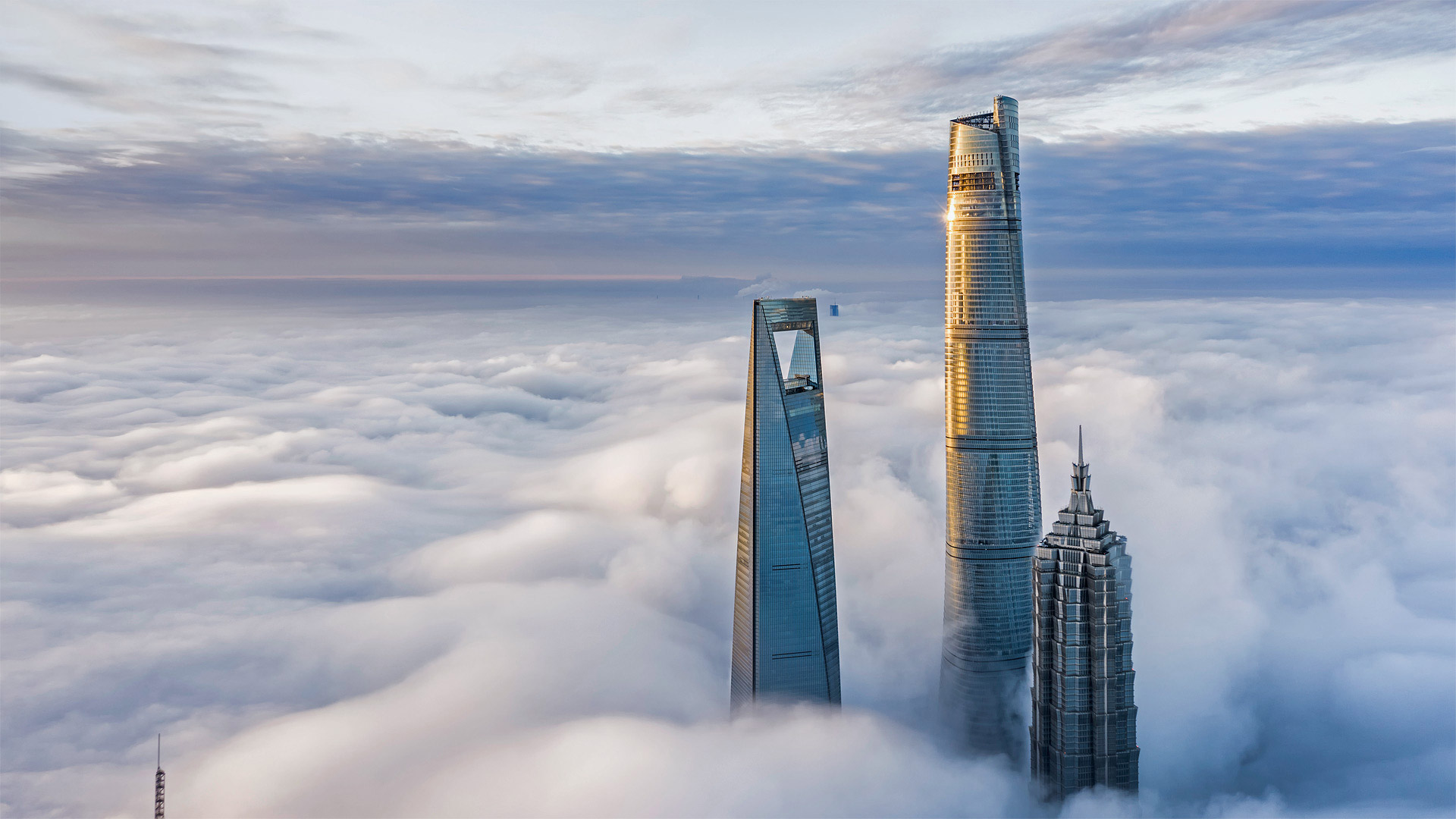
陆家嘴金融贸易区,中国上海 Lujiazui Financial District, Shanghai, China (© Jackal Pan/Getty Images)
Tall, taller, tallest
Piercing the clouds above Shanghai as we celebrate National Skyscraper Day, each of these three supertall spires could be seen as a freeze-frame of China's swift economic growth in the past couple of decades. Jin Mao Tower (right, 1,380 feet) was China's tallest building from 1999 until the Shanghai World Financial Center (left, 1,614 feet) opened in 2007 and took the title. Shanghai Tower (center, 2,139 feet) topped out in 2013, besting the SWFC and becoming the second-tallest skyscraper in the world (behind Dubai's Burj Khalifa).
朝圣者将风马旗扔向甘登寺上方的空中为新年祈福,中国西藏 Pilgrims throwing wind horses into the air above Ganden Monastery for the New Year in Tibet, China (© Ian Cumming/plainpicture)
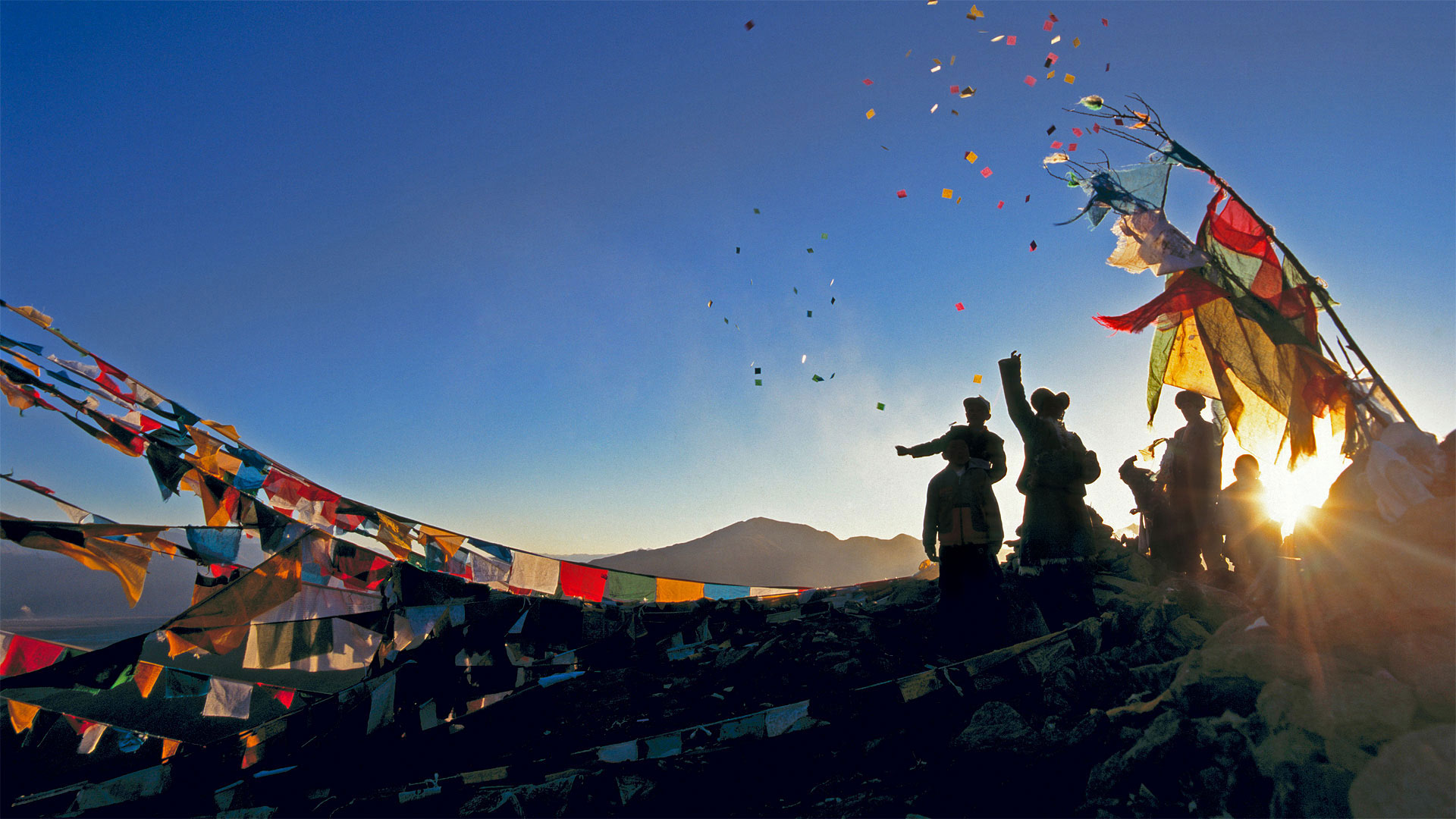
朝圣者将风马旗扔向甘登寺上方的空中为新年祈福,中国西藏 Pilgrims throwing wind horses into the air above Ganden Monastery for the New Year in Tibet, China (© Ian Cumming/plainpicture)
Wind horses carry wishes for a new year
For the first day of Losar, or the Tibetan New Year, we're paying a visit to these Buddhist pilgrims at the Ganden Monastery in Lhasa, Tibet. Losar is celebrated for 15 days, but most events occur in the first three days. They include wishing family members a prosperous year, praying at monasteries or temples, exchanging gifts, burning incense, chanting, wrestling, horse racing, and more. Celebrations for the new year end with Chotrul Duchen, or the Butter Lamp Festival. The pilgrims in today's image are releasing prayer flags called 'wind horses' or lungtas, a ritual they perform during Losar and during the rest of the year as well. Upon releasing the prayer flags, the pilgrims ask the mountain deity to 'increase their fortune like the galloping of a horse and expand their prosperity like the boiling over of milk.'
张家界天门山,中国 Tianmen Mountain in Zhangjiajie, China (© Bogdan Dyiakonovych/Shutterstock)
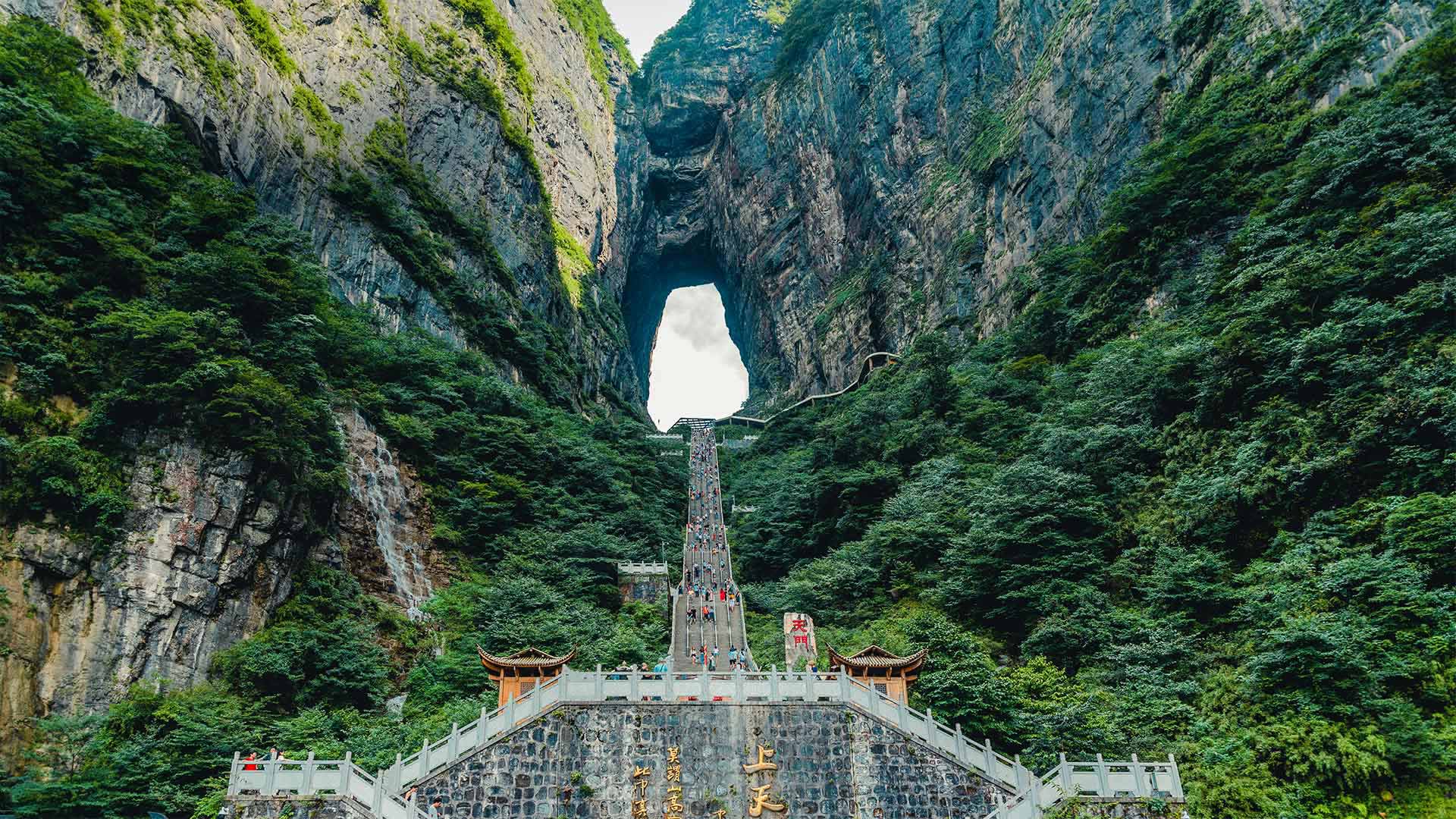
张家界天门山,中国 Tianmen Mountain in Zhangjiajie, China (© Bogdan Dyiakonovych/Shutterstock)
Take the stairs
If you want to celebrate Take the Stairs Day in style, look no further than China's Tianmen Mountain (literally Heaven's Door). About 5,000 feet above sea level, the hole in the mountain is the highest naturally formed arch in the world. Originally a cave, it became an arch in 263 AD when the backside of the mountain collapsed, creating the dramatic opening we see today. You'll have to climb 999 steps to make it to the top, but we promise the view is worth it.
北京颐和园昆明湖上的十七孔桥,中国 The Seventeen-Arch Bridge over Kunming Lake in Beijing Summer Palace, China (© Jia Wang/Getty Images)
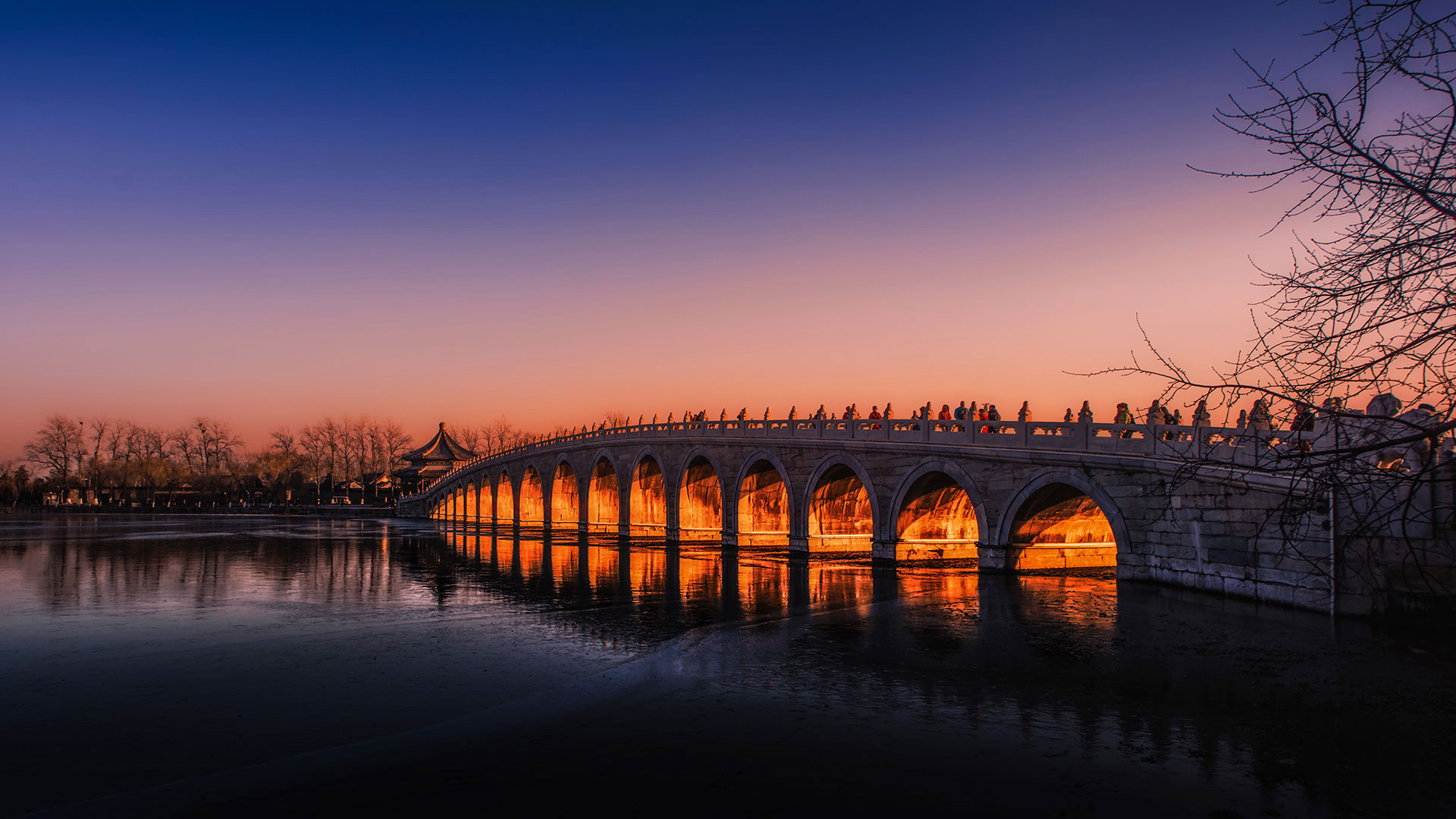
北京颐和园昆明湖上的十七孔桥,中国 The Seventeen-Arch Bridge over Kunming Lake in Beijing Summer Palace, China (© Jia Wang/Getty Images)
Seventeen arches at sunset
When it's winter solstice time in the Northern Hemisphere, the setting sun shines under the Seventeen-Arch Bridge of the Summer Palace in Beijing, causing this romantic glow. In the 18th century, during the reign of the Qing dynasty of China, Emperor Qianlong ordered the construction of this 1.1 square mile collection of gardens, lakes, and various structures including temples and small palaces. Today it's one of Beijing's premier attractions and will be crowded today with visitors headed to the bridge in time for sunset.
老君山,河南,中国 Laojun Mountain in Henan, China (© Sino Images/Getty Images) (© Sino Images/Getty Images)
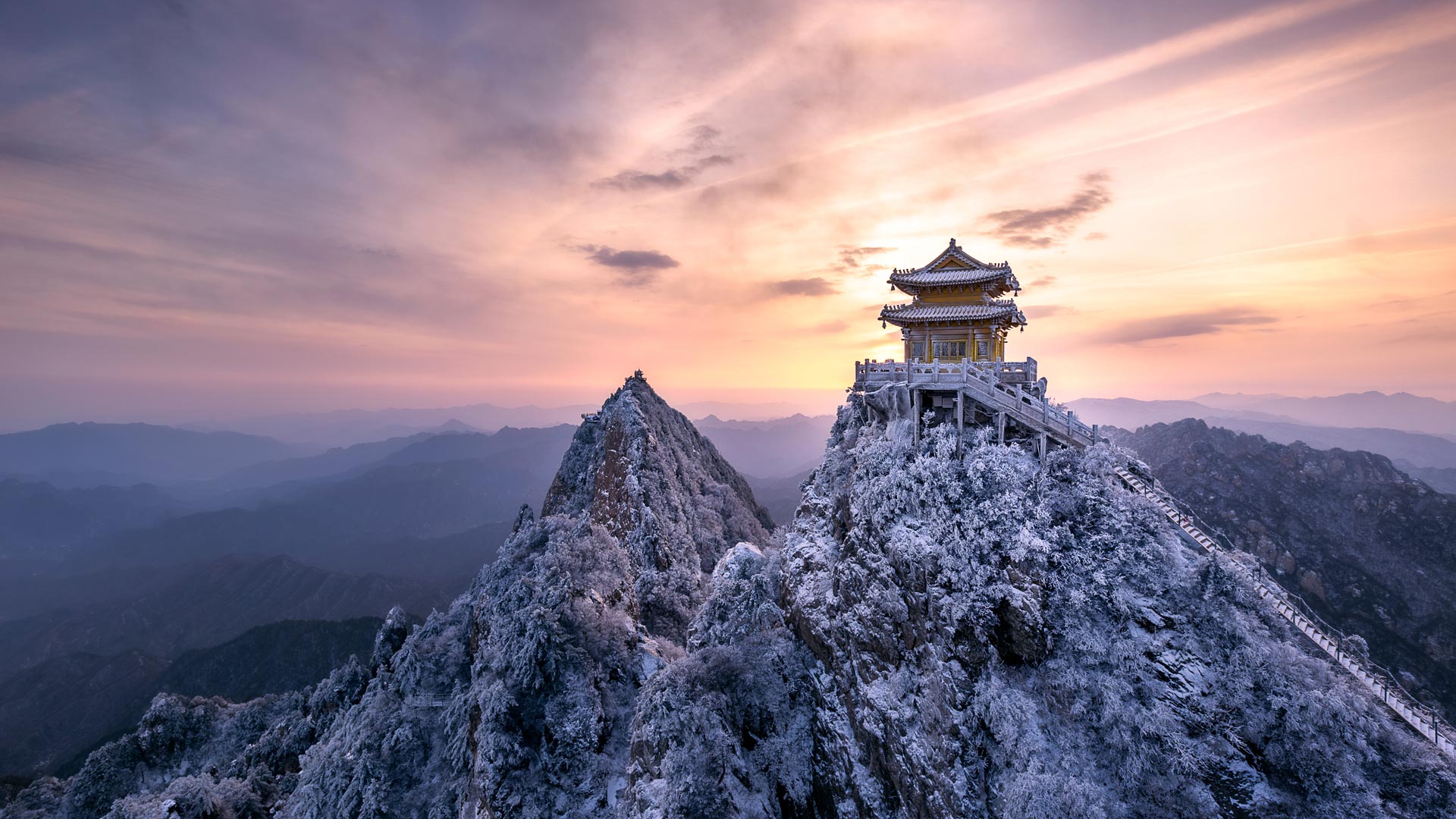
【今日冬至】老君山,河南,中国 Laojun Mountain in Henan, China (© Sino Images/Getty Images) (© Sino Images/Getty Images)
Mt Laojun, wonderland on Earth
This is the Mount Laojun which was located two and a half hours south-west of Luoyang, it is one of the most popular destinations in Henan province. Laojun Mountain is a great scenery in all seasons, and only the winter snow scenery is better, Our picture show the beauty scenery of the DongZhi. If you do not feel like climbing, it’s possible to climb the gondola with a spectacular view of the region and the characteristics of the mountain: small waterfalls, green trees, rocks with original shapes … At the top from the mountain is a gilded roof pavilion attracting the majority of visitors.